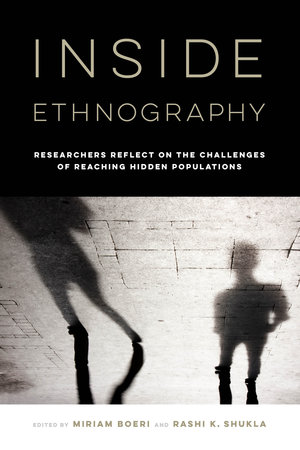By Miriam Boeri and Rashi K. Shukla, editors of Inside Ethnography: Researchers Reflect on the Challenges of Reaching Hidden Populations
This guest post is part of our ASA blog series published in conjunction with the meeting of the American Sociological Association in New York City, NY, August 10-13. #ASA19
Miriam Boeri will be attending #ASA19 and participating on the panel “Ethnographic Methods for Social Justice: A Case Study on Drug User Research” on Sunday, August 11th, at 12:30 PM.
Today, we face a public health crisis in the U.S. started by pharmaceutical companies. According to the Centers for Disease Control and Prevention, there were over 70,000 overdose deaths in the U.S. in 2017. Since opioids are the driving force behind these deaths, currently, national attention is focused on opioid use. An unintended consequence of this has been rising interest in providing treatment rather than jail for people with opioid dependence. Those interested in social justice might question why society’s response to a drug epidemic that is largely white and middle-class is very different than responses to previous drug epidemics.
In some states, methamphetamine use is increasing, as use of opioids is decreasing. Will methamphetamine users be given the same research attention and medical care? In many poor, urban areas, crack cocaine is more prevalent than opioids. Will people who use crack be offered treatment instead of jail?
Problematic drug use is rooted in social problems, from chronic unemployment or homelessness, to the more abstract concepts of alienation, anomie, or social isolation. As ethnographers who study drugs, we have collectively spent a large portion of our academic careers venturing into the field. What we have learned over the decades is that the drug problem plaguing communities across the country is complex and multi-faceted.
We have come to appreciate the challenges that lie ahead when attempting to respond to problem drug use and the accompanying damage it brings to individuals, families, and communities. We have personally witnessed the devastation that drug use has wrought on people and their lives. Underneath this devastation is a foundation of pain and suffering.

While policy makers and those on the front lines struggle to find effective solutions, the problems that stem from half a century of punitive responses to drug use continue to give rise to one drug epidemic after another. The current trend toward treatment-not-jail focuses on the individual and ignores social issues. The most popular response to the opioid problem is medication assisted treatment (Suboxone), which addresses the physical mechanism of opioid dependence. It does not work for other drug use, and it does not consider the root causes of a drug problem.
It is time to think outside of the box.
Decriminalization of drugs in Portugal reduced drug use by youth and adults while increasing treatment retention (1). A focus on social integration in Trieste, Italy, provided social resources for those with mental health problems in the community instead of isolating them in an institution. Both used a panel of community members to facilitate effective re-integration in social life.
Not all drug use is problematic. But many people address their problems with alcohol or drugs. Medication, decriminalization, and other solutions must be accompanied with access to the resources needed to address the root causes of problem drug use. Beyond laboratory experiments and clinical interviews, ethnographic research is needed to better understand the social context.
- Greenwald, Glenn. “Drug Decriminalization in Portugal: Lessons for Creating Fair and Successful Drug Policies” April 2, 2009. Available at SSRN 1543991: Cato Institute Whitepaper Series.


